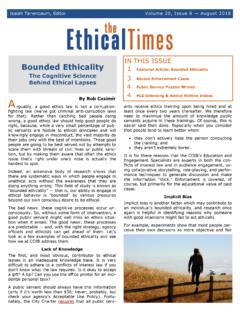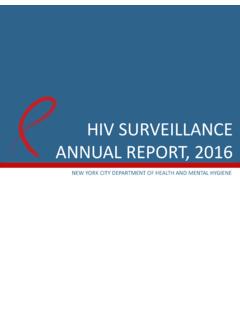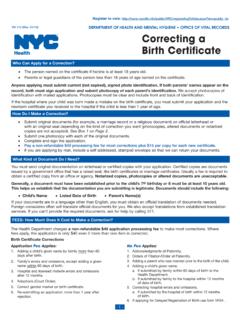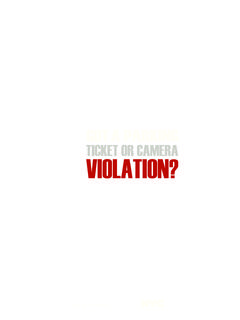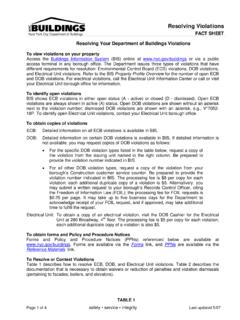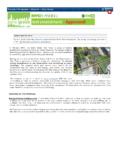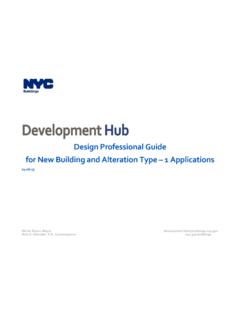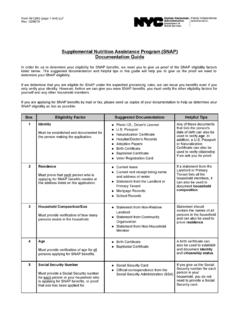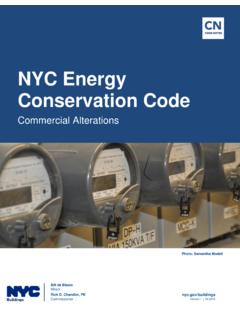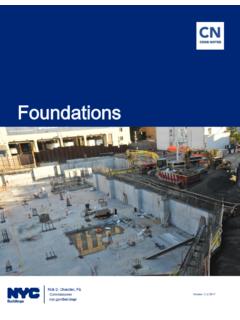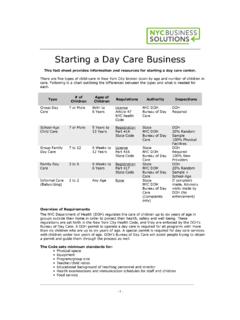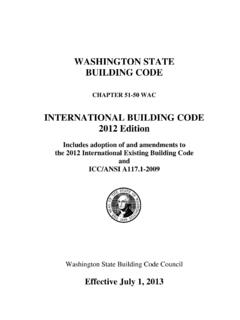Transcription of Code Notes: Certificate of Occupancy & Temporary ...
1 Rick D. Chandler, PE Commissioner Version 1 | Certificate of Occupancy & Temporary Certificate of Occupancy Certificate of Occupancy & Temporary Certificate of Occupancy build safe | live safe | page 2 of 6 A Certificate of Occupancy (CO) describes the legal Occupancy limits, layout, and allowable use of a building. New buildings must obtain a CO upon completion of work, and existing buildings must obtain a new or amended CO when there is work that changes the use, egress, or Occupancy of an existing building.
2 A Temporary Certificate of Occupancy (TCO) indicates that the property or partial property is safe for Occupancy . TCOs typically expire every 90 days, but may be less based on Building Code or Inspection Unit approval. If the outstanding issues for a permanent CO have not been completely resolved prior to the expiration date, the TCO may not be renewed. No one may legally occupy a building until the Department has issued a CO or TCO. The Department issues a final CO when the completed work substantially conforms to the approved plans for new buildings or major alterations.
3 A Letter of Completion may be issued for minor alterations that do not require a new or amended CO. For buildings built or altered prior to 1938 and a CO was not required at that time, a Letter of No Objection may be issued to confirm a building s legal use. A CO confirms that the completed work complies with all applicable laws, all paperwork has been completed, all fees owed to the Department have been paid, all relevant violations have been resolved, and all necessary approvals have been received from other City Agencies.
4 Certificate of Occupancy & Temporary Certificate of Occupancy build safe | live safe | page 3 of 6 New York City Administrative and Construction Codes The NYC Administrative Code (AC) outlines the requirements for work applications, including alterations and new buildings, and requirements for CO s are outlined in Section AC 28-118. The NYC Building Code (BC) regulates structural design, fire protection, means of egress, and accessibility. Building systems such as HVAC and plumbing are further regulated by the NYC Mechanical Code, NYC Plumbing Code and NYC Fuel Gas Code.
5 Applications for CO s shall include a statement of compliance from the registered design professional confirming that the work completed complies with the construction codes and all other applicable laws and rules. New York City Zoning Resolution The Zoning Resolution (ZR) governs use and bulk of buildings and structures, and its regulations vary according to zoning districts. In addition to permitted uses, these regulations govern floor area, open space, density, yards, height, setbacks and parking.
6 The CO includes zoning information for the building such as the zoning district and zoning use group. New York City Energy Conservation Code The NYC Energy Conservation Code (NYCECC) mandates minimum required thermal ratings for building envelopes and minimum efficiency ratings for mechanical equipment and lighting. The Code Notes series has been developed to provide a general overview of the NYC Department of Buildings (DOB) project requirements for the construction industry. The information in this document is only a summary and overview and is not intended to substitute for the full text and meaning of any law, rule or regulation.
7 Users may also consult with a registered design professional for more specific guidance on Construction Codes requirements, other regulatory laws and rules, and technical site-specific requirements. The City disclaims any liability for errors that may be contained in this document and shall not be responsible for any damages, consequential or actual, arising out of or in connection with the use of this document and/or the information contained herein. DOB reserves the right to take action at variance with this document.
8 This document shall not be construed to create a substantive or procedural right or benefit enforceable by any person. The information contained in this document is current only as of the publication date of this document. Certificate of Occupancy & Temporary Certificate of Occupancy build safe | live safe | page 4 of 6 ADMINISTRATIVE DOB Forms PW1 Plan/Work Approval Application PW1B Schedule B- Plumbing/ Sprinkler/ Standpipe PW6 Certificate of Occupancy Inspection Application PW7 Certificate of Occupancy / Letter of Completion Folder Review Request TR1 Statement of Responsibility EN2 As Built Energy Analysis Temporary Certificate of Occupancy (TCO) Process Multiple Alteration 1 (ALT1)
9 Applications may be open at a time but only one PW6 can be filed for an ALT1 application. A TCO may be issued for an ALT1. A submitted PW6 opens sequence 1 for initial TCO. The PW6 form is filed in order to initiate inspections required prior to issuance of a Certificate of Occupancy . PW6 can be filed any time after the permit is issued. Requirements for TCO Temporary or Final Construction inspection sign-off Temporary or Final Plumbing inspection sign-off Temporary or Final Electrical inspection sign-off Temporary Elevator sign-off (if applicable) $100 fee for TCO (Unless Fee is Exempt)
10 Certificate of Occupancy & Temporary Certificate of Occupancy build safe | live safe | page 5 of 6 The applicant schedules the update of the open inspections The inspection unit will enter the updated inspection information into BIS the required items that specify the floor or room details or the construction area. Applicant submits PW7 along with certification TRs, EN2 and required items. Borough Manager s Office enters the information into BIS and review/check for: - Inspection in pass-final status - Payment dues - Schedule A if the PW1 schedule A does not match, the applicant must file a PAA to amend the schedule A - Required items The TCO is issued in BIS either for 90 days (standard) or for X days (based on BC or inspection unit approval) If the space is not occupied for more than 30 days a new TCO will be needed in order to re-occupy the space.
